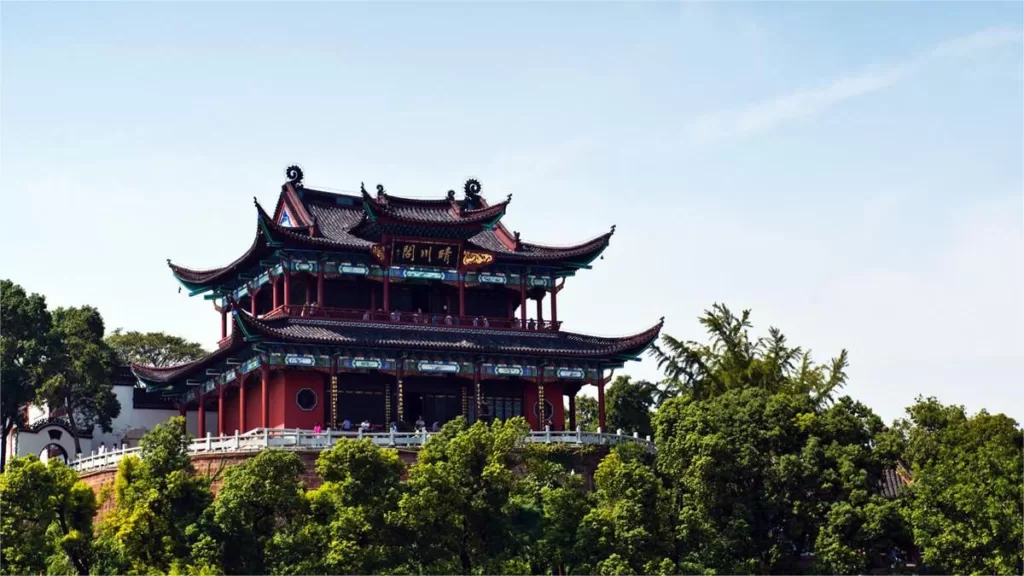Wuhan Zoo - Eintrittskarten, Öffnungszeiten, Standort und Highlights


Wuhan Zoo (武汉动物园), located on the shores of MoShui Lake in the Hankou district of Wuhan, covers an expansive area of 640,000 square meters. Its origins can be traced back to the Wuhan Zhongshan Park Zoo. Wuhan Zoo is divided into three main sections: the front section, featuring a water and land amusement area; the middle section, which houses a wide variety of wild animals and is adorned with picturesque gardens; and the rear section, currently under development, with plans for an animal breeding center and logistical facilities.
The zoo boasts a rich and diverse collection of flora and fauna, making it a popular destination for both locals and tourists. The plant life, predominantly consisting of evergreen trees, showcases unique species such as the camphor tree, Chinese fir, dawn redwood, and bamboo. In total, there are over 180 types of trees and flowers, with more than 80,000 individual plants. The extensive greenery contributes to an impressive green coverage rate of 81.3%. Wuhan Zoo is home to more than 300 species and over 3,000 individual animals, including giant pandas, golden snub-nosed monkeys, brown bears, red-crowned cranes, black storks, black swans, zebras, giraffes, hippos, elephants, lions, tigers, leopards, and Arabian baboons.
Inhaltsübersicht
- Grundlegende Informationen
- Standort und Transport
- Various Zones in Wuhan Zoo
- Vlog about Wuhan Zoo
- Nützliche Tipps aus Rezensionen zusammengefasst
- Attractions near Wuhan Zoo
Grundlegende Informationen
| Website | http://www.wuhanzoo.com.cn/ |
| Geschätzte Dauer der Tour | 2 Stunden |
| Ticketpreis | 40 RMB |
| Die Öffnungszeiten | 9.00 - 17.00 |
| Telefon Nummer | 0086-027-84844187 |
Standort und Transport
Wuhan Zoo is located on the eastern shore of MoShui Lake, in the southern part of Wuhan, China. Its precise address is 60 Dongwuyuan Road, Hankou District, Wuhan, Hubei Province. Um dorthin zu gelangen, können Sie einen der folgenden Wege wählen:
Bus: Take bus 42, 273, 361, 413, 553, 556, 580, 608, 622, or 646 and get off at Dongwuyuan Road Wuhan Zoo Stop (动物园路武汉动物园站).
Metro: The closest metro station to Wuhan Zoo is Wulidun (五里墩) on line 5. After getting out of the station from Exit B, walk about 800 meters to the southeast to reach the zoo.
Various Zones in Wuhan Zoo
Wetland Bird Zone
One of the standout areas within Wuhan Zoo is the Wetland Bird Zone, situated in the southeastern corner of the park. Covering an area of over 120,000 square meters, this zone exhibits around 60 species of rare and exotic birds, including wading birds, waterfowl, climbing birds, and songbirds.
Lion and Tiger Mountain
At the Lion and Tiger Mountain, you can witness the cohabitation of Siberian tigers and African lions. In addition to these majestic big cats, you can encounter a variety of smaller predators, including cheetahs, clouded leopards, and various other feline species.
Pflanzenfresser-Zone
The Herbivore Zone is home to a diverse range of herbivorous animals, such as giraffes, zebras, hippos, elephants, and white rhinoceroses. This section offers visitors the chance to observe and learn about the behaviors and habitats of these gentle giants.
Giant Panda Pavilion
One of the most remarkable attractions within Wuhan Zoo is the Giant Panda Pavilion. Located at the highest point in the zoo and covering approximately 5,400 square meters, the pavilion offers an immersive environment for these beloved bears. The design of the exhibit is crafted to create an atmosphere where visitors feel like they are guests in the pandas’ homes. The unique architectural layout involves a “high on the inside, low on the outside” approach, allowing visitors to view the pandas from below, simulating the experience of visiting a panda in its own habitat.
Vlog about Wuhan Zoo
Nützliche Tipps aus Rezensionen zusammengefasst
Plan Your Route Carefully: Make sure to study the zoo’s map and plan your route in advance to avoid unnecessary detours and backtracking. This will help you optimize your time and energy while exploring the zoo.
Seating Availability: It can be challenging to find seating along the way, so consider this especially if you’re accompanying elderly individuals, pregnant women, or young children who may find it tiring to walk for extended periods.
Transport-Optionen:
- Sightseeing Bus: For 10 yuan per person, you can enjoy unlimited rides on the sightseeing bus, which travels around the entire zoo. However, be aware that the distance between stops may be considerable.
- Mini Train: There’s also a mini train available for 15 yuan per person, which circulates around the lake area of the zoo.
Service Areas: Each section of the zoo has service areas where food and beverages are available, providing opportunities to rest and recharge during your visit.
Panda Viewing: It’s recommended to visit the pandas first, as they tend to be more active earlier in the day. Arriving around 9:00 AM is ideal, as there may be additional feeding sessions during this time, and the pandas are usually more lively.
Visit in the Morning: Animals are typically more active in the morning, so it’s best to visit the zoo during this time. By the afternoon, many animals may be resting or difficult to spot, as they may be hiding or asleep. Additionally, the zoo closes at 5:00 PM, so visiting in the afternoon may not provide enough time to fully explore all the exhibits.
Attractions near Wuhan Zoo

Iron Gate Pass - Ein strategischer Pass vor über 2000 Jahren

Qingchuan-Pavillon - einer der drei großen Aussichtspunkte von Wuhan

Guiyuan-Tempel - Zweigesichtige Guanyin-Statue

Zhang Zhidong und das Museum für moderne Industrie

Dayu Mythological Park - Geschichten und Legenden rund um Dayu

Qingchuan-Brücke - Regenbogenbrücke

Guishan Park - das geografische Herz von Wuhan

Hanzheng Street - Erschwingliche Kleinwaren

Wuhan Chinese Strange Stone Museum - Ein Zeugnis der geologischen Wunder der Erde

Guqin-Terrasse - Lengend von Boya und Ziqi

Wuhan Qintai Grand Theater - ein kulturelles Zentrum
Lokales Leben in Hubei, Wuhan Attraktionen